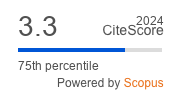Article | Open Access
“Listen to What We Have to Say”: Children and Young People’s Perspectives on Urban Regeneration
| Views: | 3554 | | | Downloads: | 1944 |
Abstract: There is an important body of research that explores the contested understandings of urban regeneration programmes in areas of socio-economic disadvantage. While poor housing and living conditions must be tackled, regeneration programmes have been criticised for their destructive and displacement impacts on communities, their lack of public consultation and their reinforcement of the stigmatization of poor areas that draws “attention away from the structural and institutional failures that produce and reproduce poverty” and inequality (Hancock & Mooney, 2013, p. 59). However, much of the literature focuses on the understandings and perspectives of adult residents in regeneration areas. This article explores the views of young residents from ages 6 to 19 in Knocknaheeny, one of the largest social housing estates in Cork City in the South of Ireland, which is undergoing a regeneration programme. Through a series of creative methods, the research reveals the distinctive analysis these children and young people have on their community, the change it is undergoing, issues of poverty, stigma and exclusion, and their lack of involvement in the decision-making process. Taken together, these children and young people generate an analysis that is strikingly reminiscent of Wacquant’s (2008) concept of ‘territorial stigma.’ They clearly cite how the misrecognition and devaluation of their neighbourhood and community shifts responsibility for decline away from the institutional failings of the local authority and state, back toward the people who live there.
Keywords: children; consultation; Cork; creativity in research; stigma; urban regeneration; youth
Supplementary Files:
Published:
© Siobhan O'Sullivan, Cathal O'Connell, Lorcan Byrne. This is an open access article distributed under the terms of the Creative Commons Attribution 4.0 license (http://creativecommons.org/licenses/by/4.0), which permits any use, distribution, and reproduction of the work without further permission provided the original author(s) and source are credited.


